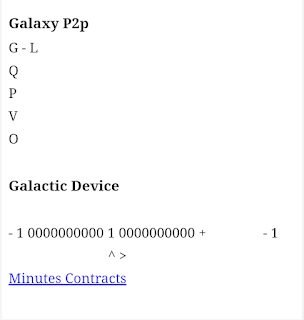Fusion: The Power Behind Stars and Hydrogen Bombs
Fusion is the process in which two atomic nuclei combine to form a heavier nucleus, releasing a large amount of energy. It is the fundamental process that powers stars, including our Sun. Fusion can occur with light elements, typically hydrogen isotopes such as Deuterium (D) and Tritium (T).
Types of Fusion:
The most well-known fusion reaction is the fusion of Deuterium and Tritium (the isotopes of hydrogen) to produce Helium-4, a neutron, and a large amount of energy.
The equation for this reaction is:
D + T \rightarrow ^{4}He + n + 17.6 \, \text{MeV}
D = Deuterium (Hydrogen-2)
T = Tritium (Hydrogen-3)
He = Helium-4 (an isotope of helium)
n = a neutron
MeV = Mega-electron volts, a unit of energy
Why is Fusion so Powerful?
Fusion releases an immense amount of energy due to the binding energy of atomic nuclei. When light nuclei (such as hydrogen isotopes) combine to form a heavier nucleus (like helium), the mass of the resulting nucleus is slightly less than the sum of the original masses. This missing mass is converted into energy according to Einstein's equation:
E = mc^2
E = Energy
m = Mass defect (the difference in mass before and after the fusion reaction)
c = Speed of light ()
In the case of Deuterium-Tritium (D-T) fusion, the energy released is about 17.6 MeV per reaction. This is roughly 3 million times more energy per unit of fuel than burning chemical fuels (like coal or gasoline).
The Process of Fusion:
1. High Temperature and Pressure:
For fusion to occur, the hydrogen isotopes must overcome their electrostatic repulsion (since both nuclei are positively charged and naturally repel each other). This requires extremely high temperatures (millions of degrees Celsius) to give the nuclei enough energy to collide and fuse.
In the core of stars (including our Sun), temperatures reach around 15 million degrees Celsius.
Pressure is also needed to increase the likelihood of these collisions. In stars, the massive gravitational force provides this pressure. In laboratory fusion reactors (like tokamaks), magnetic fields or lasers are used to contain the plasma and achieve the necessary pressure.
2. The Fusion Reaction:
When the nuclei of Deuterium and Tritium collide at extremely high velocities, they fuse into a Helium-4 nucleus and release a neutron.
The neutron carries a large amount of energy and is one of the key products of the reaction.
The energy is released primarily as kinetic energy of the particles produced, which is eventually transferred to the surrounding material, heating it up.
3. Energy Capture:
In a fusion reactor, this energy is harnessed by capturing the heat from the reaction. The heat is used to produce steam that drives turbines and generates electricity.
In an uncontrolled fusion event, such as in a hydrogen bomb, the energy is released in an explosive manner, causing massive destruction.
Why Deuterium and Tritium?
Deuterium (D) is a stable isotope of hydrogen that has one proton and one neutron in its nucleus. It is naturally abundant in water.
Tritium (T) is a radioactive isotope of hydrogen with one proton and two neutrons. Tritium is rare in nature but can be produced in fusion reactors.
The Deuterium-Tritium (D-T) reaction is the most efficient and common in both research reactors and weapons because it requires the lowest temperature for fusion to occur compared to other isotopes like Deuterium-Deuterium (D-D) or Helium-3 fusion.
Fusion in Stars:
Fusion in stars is responsible for the production of light and heat in stars, like our Sun. In the core of the Sun, hydrogen atoms fuse to form helium in a process called the proton-proton chain reaction. This process releases energy that eventually radiates as sunlight.
The Sun's core temperature is about 15 million°C, allowing hydrogen atoms to overcome their repulsive forces and fuse together.
Fusion Power in Energy Production:
Fusion energy offers the potential for a nearly limitless, clean energy source. Unlike fission (used in nuclear reactors), which produces radioactive waste, fusion reactions produce very little waste and no long-lived radioactive materials.
The fuel (Deuterium and Tritium) is abundant, especially Deuterium, which can be extracted from water, and Tritium can be bred in the reactor itself from lithium.
Challenges of Achieving Controlled Fusion:
High temperatures and pressures are needed to achieve fusion, which is difficult to control.
Creating a stable plasma (the state of matter in which fusion occurs) and maintaining the required conditions for extended periods remains a significant technical challenge.
Currently, experimental reactors like ITER and NIF (National Ignition Facility) are working on achieving net-positive energy from fusion, meaning more energy is produced than is consumed to sustain the reaction.
Fusion in Weapons (Hydrogen Bombs):
In a hydrogen bomb (a thermonuclear bomb), fusion is used as a secondary explosive mechanism after an initial fission bomb is detonated. The intense heat and pressure from the fission reaction trigger the fusion of Deuterium and Tritium, leading to an extremely powerful explosion.
Summary:
Fusion is the process of combining two light atomic nuclei to form a heavier nucleus, releasing large amounts of energy.
The Deuterium-Tritium (D-T) fusion reaction is the most common, producing Helium-4 and a neutron, releasing 17.6 MeV of energy per reaction.
Fusion occurs at extremely high temperatures and pressures, which are difficult to achieve and control, but it holds great promise for future energy production due to its clean and efficient nature.
Fusion remains a powerful natural phenomenon and has the potential to revolutionize energy production, but achieving it in a controlled and sustainable manner is a major scientific and engineering challenge.







0 Comments